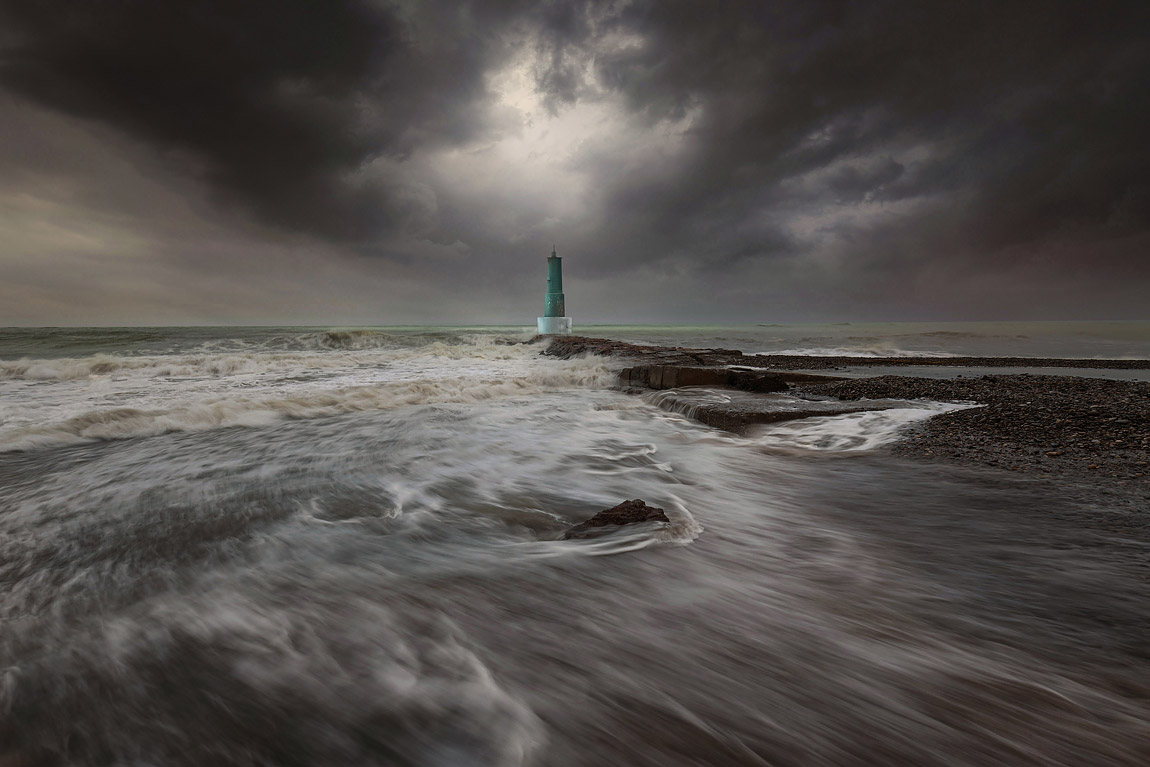Small Mediterranean beacons are a type of navigational aid found throughout the Mediterranean region. They are primarily used by ships to aid navigation and safety. Although much smaller than traditional lighthouses, these beacons serve a similar purpose in guiding vessels safely, especially near coastlines, harbours, or areas where larger lighthouses may not be needed.
These beacons may be more portable or simpler in design. They are often made of concrete, steel or stone and can be cylindrical or square in shape. Some are designed as small towers, while others can be mounted on rocks, piers or other infrastructure. Many small beacons use light, often in the form of flashing LEDs or small lamps, to provide visibility at night or in poor weather conditions. Some may also use reflectors or painted markings to increase their visibility during the day.
I managed to take this photo during a late summer evening storm. It was quite a fun, challenging, but rewarding photo session. The conditions were very bad: it was a very stormy evening with rain and strong winds.
My main objective soon became to capture this location under the raw energy of this blustery summer evening. Once I had decided on the composition, I placed stones under the tripod feet for better stability in the shifting sand, as the waves washing up on the shore were very unpredictable and not easy to manage.
I wore water sandals as I knew my feet would eventually get wet. Sometimes, the waves would come in strong, which meant holding on to the tripod to start all over again later. I must have spent at least a couple of hours there, fighting the elements, waiting for the best light in the sky and the best result from the receding waves in the foreground, an effect that draws the viewer into the picture. The dedication and attention to detail certainly paid off in capturing this dramatic moment.
I used a four-stop magnetic gradient filter to darken the sky in the hope of achieving greater dynamic contrast and a circular polariser to enhance the texture of the water. Focus stacking three wide-angle shots was essential to maintain sharpness in the foreground, mid-ground and background despite the challenging conditions.


